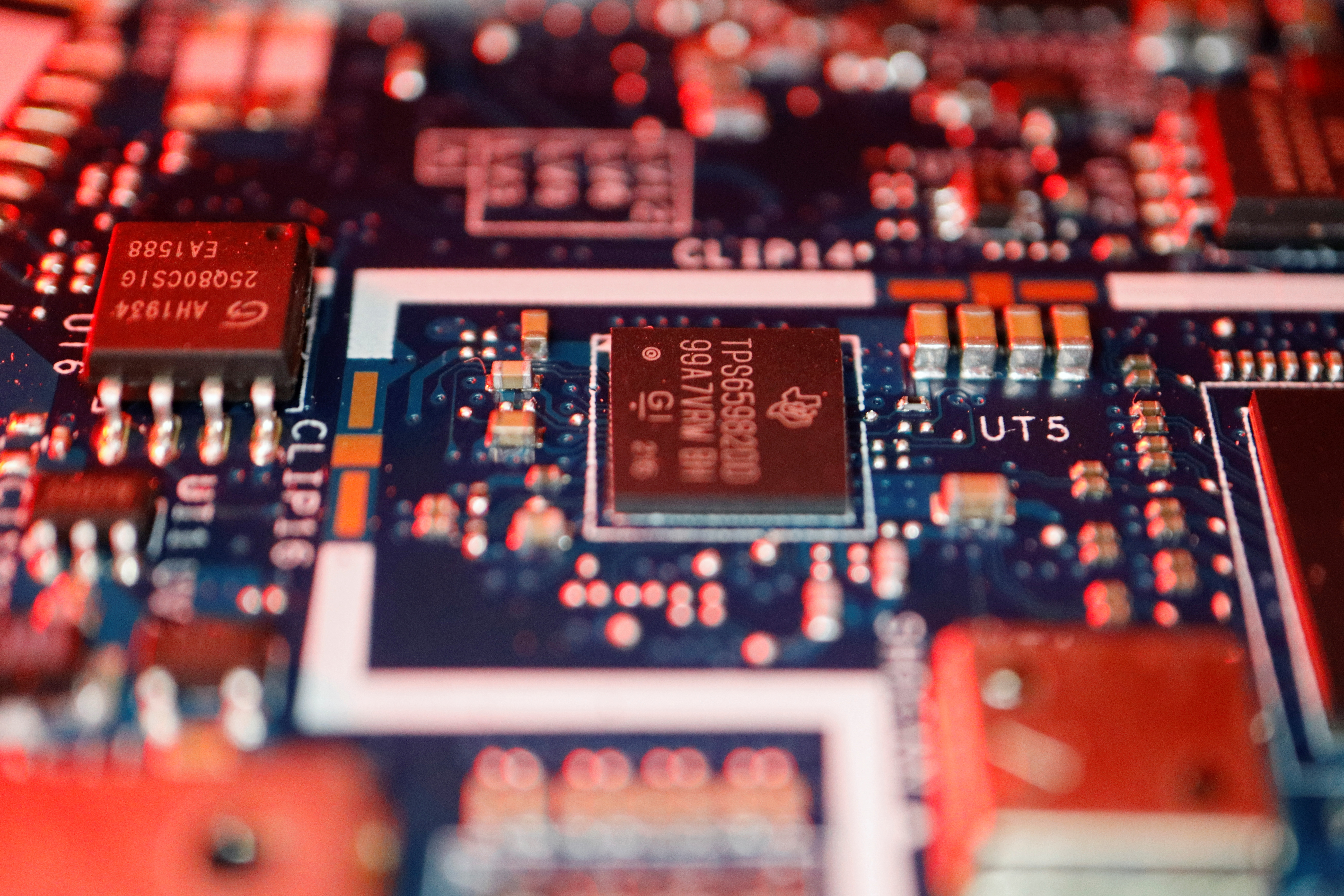
United States President Joe Biden’s administration has said it will require companies winning funds from its $52bn semiconductor manufacturing and research programme to share excess profits and explain how they plan to provide employees with affordable childcare.
The US Commerce Department on Tuesday released plans to begin accepting applications in late June for a $39bn manufacturing subsidy programme. The funding is part of the CHIPS and Science Act, which President Joe Biden signed into law last August. The law also creates a 25 percent investment tax credit for building chip plants, estimated to be worth $24bn.
The CHIPS Act plays a central role in the Biden administration’s effort to bring semiconductor manufacturing back to the US. Its success is vital to US ambitions to keep ahead of China in global markets.
Semiconductor companies have announced more than 40 new projects, including nearly $200bn in private investments to increase domestic production, since the law’s introduction in August.
Recipients who receive more than $150m in direct funding “will be required to share with the US government a portion of any cash flows or returns that exceed the applicant’s projections by an agreed-upon threshold”, the department said.
Commerce also expects “upside sharing will only be material in instances where the project significantly exceeds its projected cash flows or returns, and will not exceed 75 percent of the recipient’s direct funding award”.
‘Not a free handout’
Democratic Senator Jack Reed praised the profit-sharing plan, saying chips funding is “not a free handout for multi-billion dollar tech companies… There is no downside for companies that participate because they only have to share a portion of future profits if they do exceedingly well”.
The rules also require that companies ensure high-quality and affordable childcare is available at the plant for construction workers and operators. This could include building company childcare centres near construction sites or new plants, paying local childcare providers to add capacity at an affordable cost or directly subsidising workers’ care costs, the New York Times reported.
Commerce Secretary Gina Raimondo said companies must submit a plan that includes an outline of workforce needs. Applicants seeking more than $150m in direct funding must submit “a plan for how they will provide affordable and accessible childcare for their workers”.
Republican House Science Committee Chair Frank Lucas criticised the childcare and revenue-sharing provisions, saying they exceeded the authority granted by the US Congress. He said the Commerce Department was “focusing less on the urgent need for chip production and more on attempting to impose their labour agenda on this critical industry”.
Companies winning funding are also prohibited from using chips funds for dividends or stock buybacks, and must provide details of any plans to buy back their own shares over five years. The department will consider an “applicant’s commitments to refrain from stock buybacks”.
Democratic legislators have noted that the largest US semiconductor companies have poured hundreds of billions of dollars into stock buybacks in recent years, with Intel spending more than $100bn on buybacks since 2005. Intel also pays a dividend.
It is not uncommon for states to require specific employment targets as a condition for tax subsidies but the Biden administration is a significant expansion.
Public incentives
White House economic adviser Heather Boushey said the announcement “is emblematic of using public incentives to simultaneously deliver on building strategic supply chains for our economic and national security while also investing in our care infrastructure”.
The Biden administration laid out ambitious plans to pay millions of caretakers, mostly women, better salaries, and make child and elder care cheaper in 2021 but it failed to win majority support in Congress.
Applicants must address six program priority areas, including plans to commit to investing in R&D in the US semiconductor industry, such as by building domestic R&D facilities.
Applicants should also “create opportunities for minority-owned, veteran-owned, and women-owned businesses; demonstrate climate and environmental responsibility; invest in their communities by addressing barriers to economic inclusion; and commit to using iron, steel, and construction materials produced in the United States”.
The Semiconductor Industry Association said it was carefully reviewing the funding notice that “lays out the rules of the road for companies to apply for the CHIPS Act’s manufacturing grants”.
Most direct funding awards are expected to range between 5 and 15 percent of project capital expenditures. Commerce said it generally expects the total amount of an award, including loan or loan guarantee, to not exceed 35 percent of project capital expenditures.
“We’re going to be doing our own diligence. We’re not writing blank cheques to any company that asks,” Raimondo said. “We’re making companies open their books.”
[The style guide asks we don’t use US seasons for time frames – could we please change “spring” and “fall” below to months?]
The initial funding opportunity seeks applications for projects involving leading-edge, current-generation, and mature-node semiconductors. It will release funding opportunities for semiconductor materials and manufacturing equipment facilities in late spring and one for R&D facilities in the fall.
Raimondo also noted that companies winning awards will be required to enter into agreements restricting their ability to expand semiconductor manufacturing capacity in foreign countries of concern like China for 10 years after winning funding. They cannot engage in any joint research or licensing efforts with a foreign entity of concern involving sensitive technologies.
“We’re going to be releasing very detailed regulations in the next few weeks that give companies a clearer sense of what the red lines are,” Raimondo said.







